She doodles for a living: This Singaporean comic artist tackles taboo issues with manga-style art
She designs, she illustrates, she’s a comic book artist. Claire Low, the lead designer of Difference Engine, tells CNA Women what it’s like telling stories from a Chinese, Singaporean, and Asian perspective and how comics can be a great platform to explore complex stories.
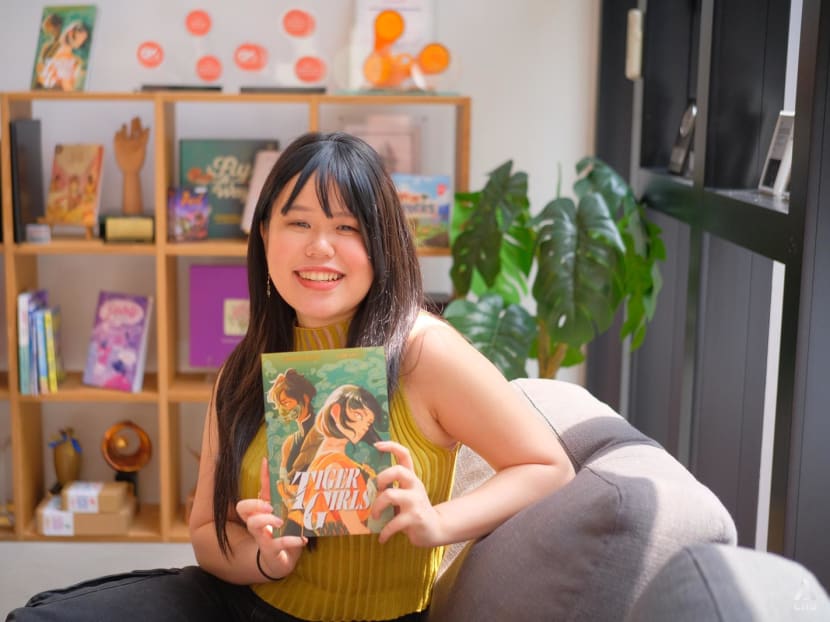
Claire Low is a Singaporean comic book illustrator at Difference Engine. (Photo: CNA/Izza Haziqah)

This audio is generated by an AI tool.
As a teenager, Claire Low spent most of her time drawing, doodling and sketching. Naturally, she incurred her mother’s classic Asian Parent wrath: “You’re going to starve if you end up an artist! Go practise your math!”
But Low paid her well-meaning mum little heed. The Singaporean decided to study graphic design at university, and after graduating in 2021, got a job as a comic book artist at local comics publisher Difference Engine.
Some of the company’s work includes the local superhero series Amazing Ash & Superhero Ah Ma, and the comic anthology Sound, which features artists and writers from Southeast Asia.
“As a comic book artist, I work on each panel and page to effectively deliver the narrative and the characters’ journey,” Low said.
The 28-year-old is also Difference Engine’s design lead and creates art on Instagram under her username comatomato.
“I think of ways to aesthetically and visually package a whole story,” she said. She looks at cover design, chooses fonts that best express the narrative, and selects the colour palettes that tie in with the publicity or launch campaigns.
“It’s a lot of work that’s both big picture and detail-oriented,” she said.
Low and her colleagues also collaborate frequently with comic artists and authors across the region – including Thailand, Malaysia, and the Philippines – to bring Southeast-Asian stories to life through the visual art form.
MORE LOCAL STORIES WITH COMICS
Unlike many comic book artists she knows, Low didn’t read many when she was growing up. Marvel references would fly over her head, and she was never particularly drawn to American superheroes like Superman or Spider-Man.

“I did love manga, though, and I enjoyed a lot of anime, so Japanese manga and comics had a big influence on me and my drawing style,” she said.
Her favourites include Bleach by Tite Kubo and Inuyasha, both by Rumiko Takahashi, which explore fantasy, self-discovery, social issues, and adventure.
It’s no surprise, then, that her work and the stories she gravitates to share similar themes.
Take Tiger Girls. As both the artist and design lead for the fantasy comic, Low spearheaded the visual direction and drew the panels. The comic book, written by author Felicia Low-Jimenez, was released in paperback in May, after its initial launch as a webcomic in 2024.
The story draws on an old Chinese superstition that girls born in the Year of the Tiger bring bad luck. In the dystopian world Low helped visualise, these girls are hunted and killed for the misfortune they’re believed to cause.
Low worked closely with Low-Jimenez to bring the characters Suling and Nadia to life. They discussed the overall idea, and Low made the decisions on the aesthetic and design of the story and its characters.
She told CNA Women that the comic is especially meaningful to her because it draws from the stories, folklore and stereotypes she grew up with as a young Chinese woman.
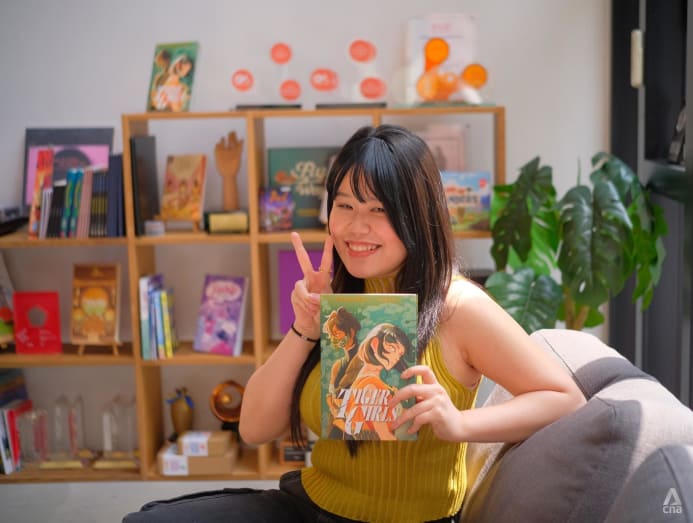
“Tiger Girls may be set in a dystopia, but reality can reflect parts of the setting, where girls are mistreated just because of their birth year or things that aren’t within their control,” she said.
It’s stories like these – grounded in Asian culture and perspectives – that Low is passionate about. It's why she believes being a comic artist in Singapore is meaningful and necessary.
“Comics are also an accessible way for people to discuss taboo topics,” Low said. In the case of Tiger Girls, Low and Low-Jimenez explored the subtle yet insidious ways women are discriminated against, even in seemingly progressive societies in Asia.
Part of her work involves collaborating with other artists, writers and publishers to create stories.
For instance, Low collaborated with content platform Think Tank Studio on a comic series called Essential Jobs. The series explored the complex issue of labour exploitation in seemingly glamorous industries such as social media, fashion, and tourism, which thrive on the mistreatment of workers by underpaying them or co-opting their stories.
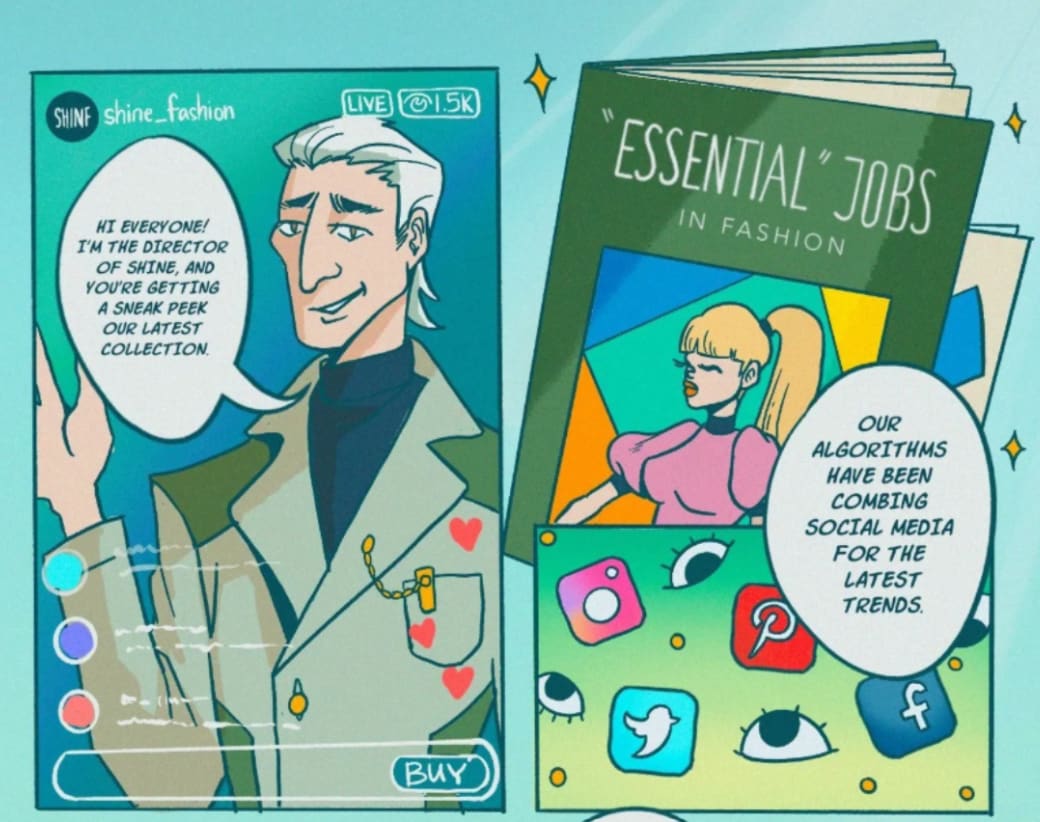
“Through comics, people are better able to stomach darker and heavier themes, and the emotional blow of reading them is also softer,” she said. “The visual art, the pacing, the colours – all of these can make people want to know more about the comic’s world and its characters, and make them reflect on the taboo topics better.”
It’s through comics that audiences can find out more about mature themes like war, violence and abuse, too, she added.
“Whenever I tell others I work at a local comic book publisher, people always react with, ‘What? There’s a comic book publisher in Singapore?’,” she said. “And while hearing that can get a little disheartening, everyone on the team just takes it in stride – it reminds us why our work is so important.
“Through us, people can get to know comics served with local flavour. We’re here to fill in that gap and tell more Singapore and Southeast Asian stories, even and especially the heavier ones, for the masses.”
CREATIVE EXPERIMENTATION IN COMICS
Comics have rekindled Low’s love for reading: “People who may be in a reading slump for years but still love or are interested in reading can get into it again by picking up a comic book.”
“Comics can be for all audiences – from slow or young readers to people who are so busy they can only read stories on their phones,” Low said. “They are as much visual art as they are written stories, and so many can be easily read on devices.”
One way this happens, Low said, is through webcomics, also called online comics or internet comics. These are often compared to self-published print comics, as anyone with an internet connection and a worthy idea can publish a webcomic. Popular platforms, which can be on a website or mobile app, include Webtoon or ComicFury.
“The format is such that you read it by scrolling through your phone or iPad, so the possibilities of exploring different stories are endless,” Low said. “I love this format and I think more artists and readers should explore it.”
She explained that webcomic artists can use the scroll function to reflect different experiences from a character’s perspective. For example, if a character is falling, that can be expressed through a sudden jump between panels. If a character is lost in thought or seeking silence, the artist could include blank panels or empty thought bubbles that scroll on endlessly.
“Webcomics and comic books in general are getting increasingly popular,” Low said. “It’s cool to see how different forms of stories are being shared so more people can experience reading differently.”
HUMAN-MADE ART IS HERE TO STAY
In an era defined by artificial intelligence (AI) – where both human writing and artistic creativity are increasingly under threat – Low’s comics and her passion for drawing, designing and illustrating stories is more vital than ever, she said.
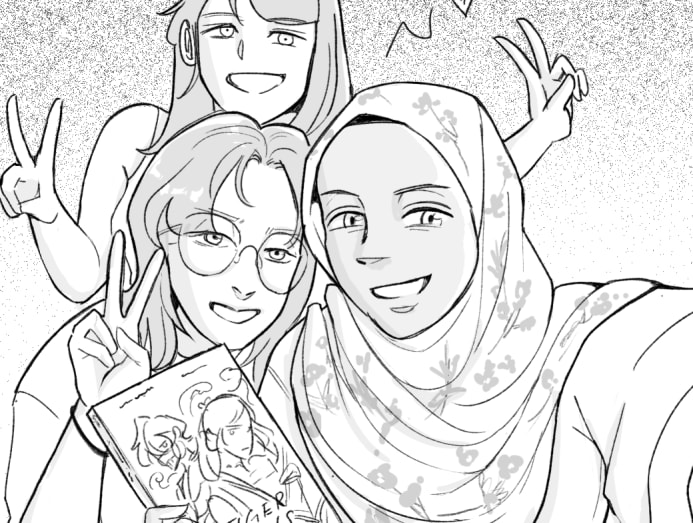
“It’s more than just ‘drawing and doodling on pieces of paper’,” she added. “Despite whatever people say about AI, I want to hold on to the belief that it’ll never take over the arts.”
Comics, she pointed out, are highly technical and not just fun to make. Artists put in a lot of effort to create them, and there are methods to ensure consistency in a character’s appearance across different panels, regardless of poses or facial expressions.
Even choosing the colours and the angle from which to draw characters is a thoughtful process, Low said.
“In Tiger Girls, I knew I wanted Suling to be more approachable, and Nadia to be more reserved and serious, so I reflected these traits in their character design elements: Suling has softer looks and more curves, whereas Nadia has sharper and angular features.”
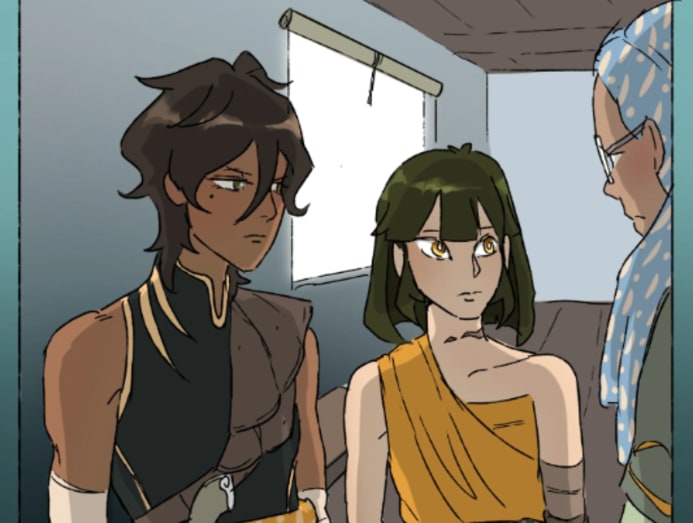
Some panels can take Low from a few minutes to several hours to draw and re-draw, to get right. Some chapters may take days.
“People make the mistake of thinking that the arts, like writing stories or illustrating comics, is only about the end product, like a finished book or novel,” she said.
“But art isn’t just a commodity – it’s a form of expression. And people are happy to financially, emotionally and morally support other people who put in the effort and time to create something based on their style and creativity.
“As comic book artists, our work isn’t fading away at all. We’re here to stay and to keep sharing as many stories as we can.”
CNA Women is a section on CNA Lifestyle that seeks to inform, empower and inspire the modern woman. If you have women-related news, issues and ideas to share with us, email CNAWomen [at] mediacorp.com.sg.





